Undirstöðuatriði varðandi feldhirðu á hvolpum
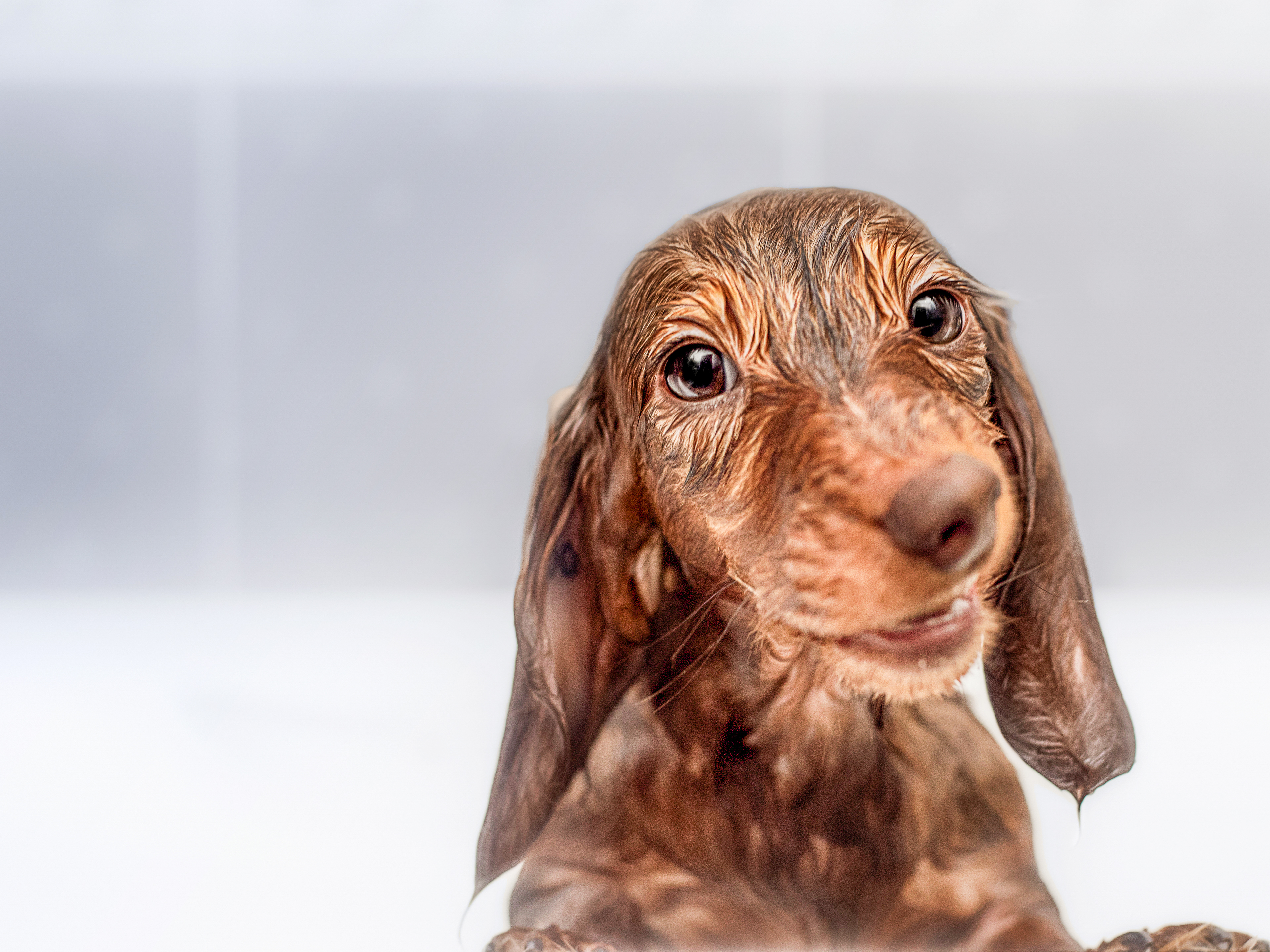

Gúmmíbursti
Notaður til að losa dauða húð og dauð feldhár á snögghærðum dýrum
Slikkerbursti
Hann er notaður til að losa óhreinindi úr feldi og losa hár úr undirfeldinum. Hann er frábær til að snyrta hunda með hrokkinn eða grófan feld.
Pinnabursti
Notaður til að losa varlega um hnúta eða flækjur, sem eru sérstaklega algeng í síðhærðum eða gljáandi feldum.
Mjúkur hárbursti
Hann er notaður til að losa óhreinindi úr feldi hundsins þegar búið er að bursta feldinn.
Gróf greiða
Þægilegt er að nota grófa greiðu við snyrtingu á skotti og þófum
Reytihnífur
Notaður til að reyta strýhærða hunda fjórum til fimm sinnum á ári. Best er að hundasnyrtir noti reytihnífinn
Naglaklippur
Sérhæfðar naglaklippur fyrir hunda eru hannaðar til að hjálpa þér að klippa neglur hvolpsins án þess að meiða hann
Tannbursti og tannkrem
Tannkrem fólks hentar hvorki hvolpum né fullorðnum hundum og því er best að nota sérstakt hundatannkrem
Hundasjampó
Húð hunda er viðkvæm og sýrustig hennar er ólíkt sýrustigi mannshúðarinnar. Þess vegna þarf að nota sérstakt hundasjampó fyrir húð og feld hunda.
Gúmmíbursti
Notaður til að losa dauða húð og dauð feldhár á snögghærðum dýrum
Slikkerbursti
Hann er notaður til að losa óhreinindi úr feldi og losa hár úr undirfeldinum. Hann er frábær til að snyrta hunda með hrokkinn eða grófan feld.
Pinnabursti
Notaður til að losa varlega um hnúta eða flækjur, sem eru sérstaklega algeng í síðhærðum eða gljáandi feldum.
Mjúkur hárbursti
Hann er notaður til að losa óhreinindi úr feldi hundsins þegar búið er að bursta feldinn.
Gróf greiða
Þægilegt er að nota grófa greiðu við snyrtingu á skotti og þófum
Reytihnífur
Notaður til að reyta strýhærða hunda fjórum til fimm sinnum á ári. Best er að hundasnyrtir noti reytihnífinn
Naglaklippur
Sérhæfðar naglaklippur fyrir hunda eru hannaðar til að hjálpa þér að klippa neglur hvolpsins án þess að meiða hann
Tannbursti og tannkrem
Tannkrem fólks hentar hvorki hvolpum né fullorðnum hundum og því er best að nota sérstakt hundatannkrem
Hundasjampó
Húð hunda er viðkvæm og sýrustig hennar er ólíkt sýrustigi mannshúðarinnar. Þess vegna þarf að nota sérstakt hundasjampó fyrir húð og feld hunda.

Næring og umhirða feldsins
Það sést vel á feldinum hvernig fóður hundurinn fær. Glansandi mjúkur feldur og heilbrigð húð eru merki um að hvolpurinn fái Omega 3 og 6 í fóðrinu ásamt amínósýrum. Á hinn bóginn er líflaus og rytjulegur feldur vísbending um að hann fái ekki nauðsynleg næringarefni úr fóðrinu. Sérsniðið hvolpafóður er fyrsta skrefið í átt að heilbrigðum feldi hvolpsins þíns.
Feldhirða hvolpsins
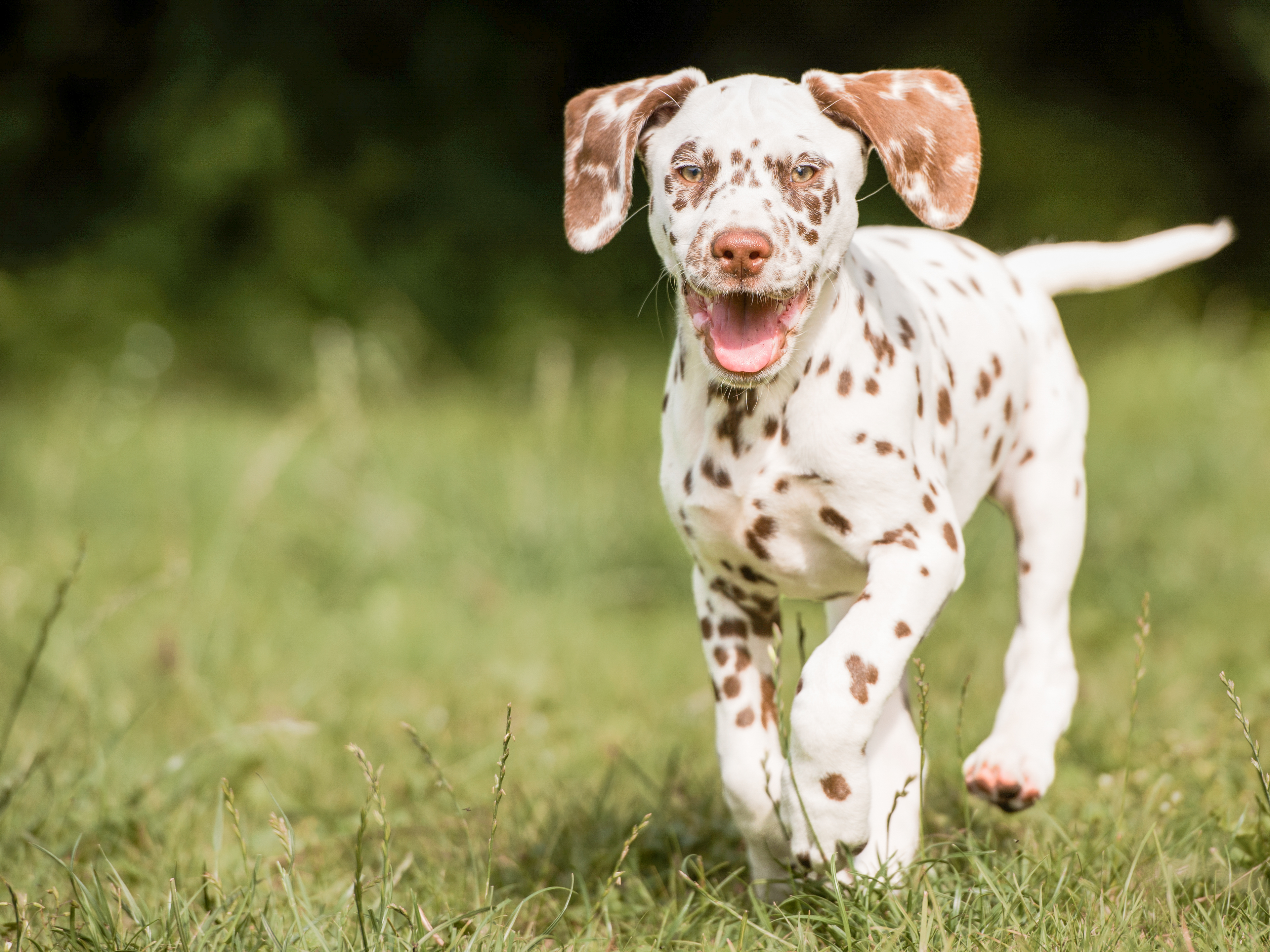
Snöggur feldur
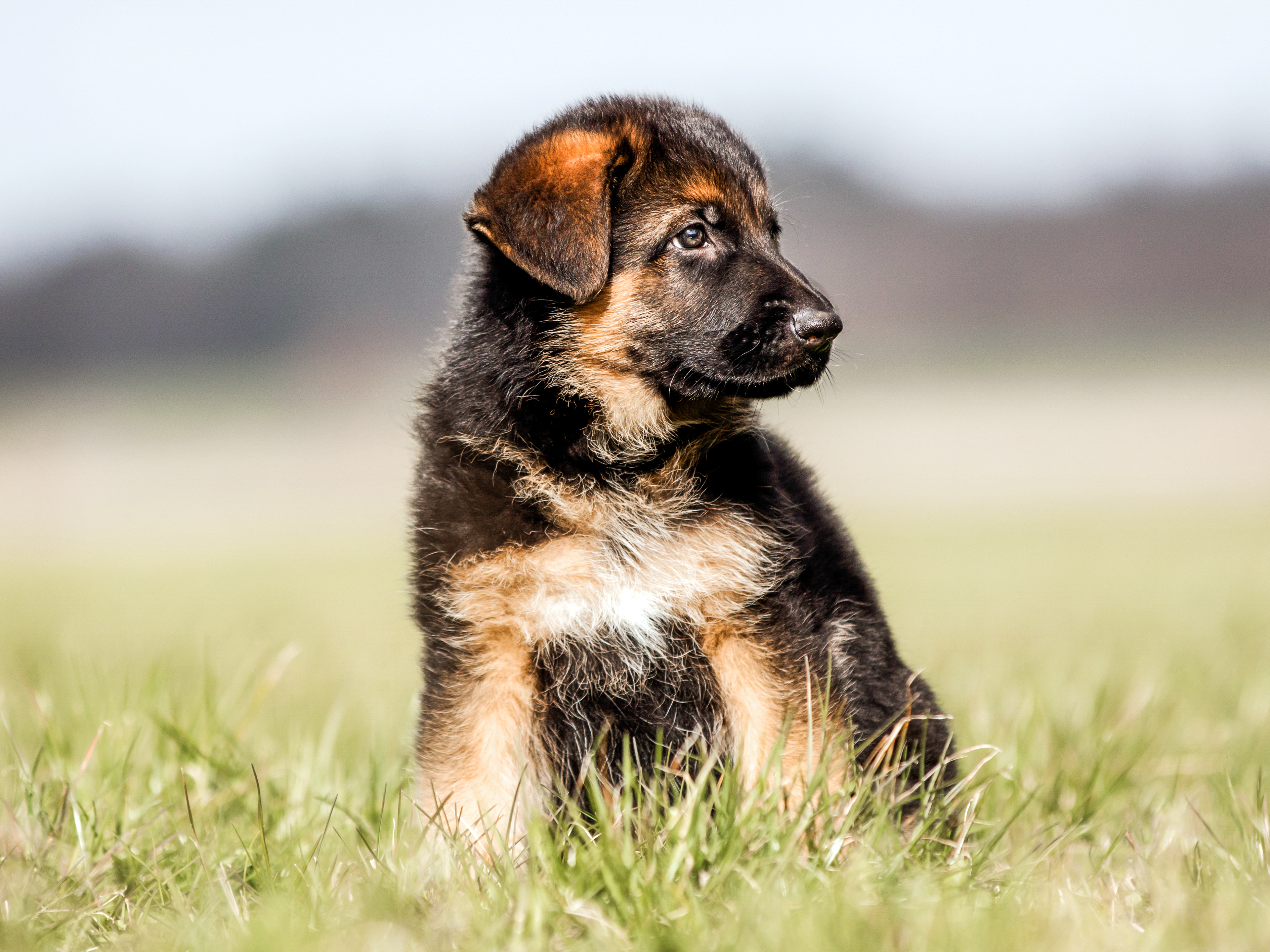
Stutt til meðalsítt hár
Kyn með stutt til meðallangt hár eru meðal annars Golden Retriever, German Shepherd og Boarder Collie. Bursta ætti slík hundakyn annan hvern dag vegna þéttleika feldsins, sem getur verið samsettur af bæði yfir- og undirfeldi.
Notaðu sleipari bursta til að bursta í gagnstæða átt við feldinn til að losa eins mikið af dauðu hári og húð og mögulegt er og hreinsa undirfeldinn. Síðan má nota stífari bursta í sömu átt og feldurinn liggur til að fjarlægja þessar leifar.
Nota má grófa greiðu á skottið og loppurnar til að fjarlægja varlega leifar og flækjur.
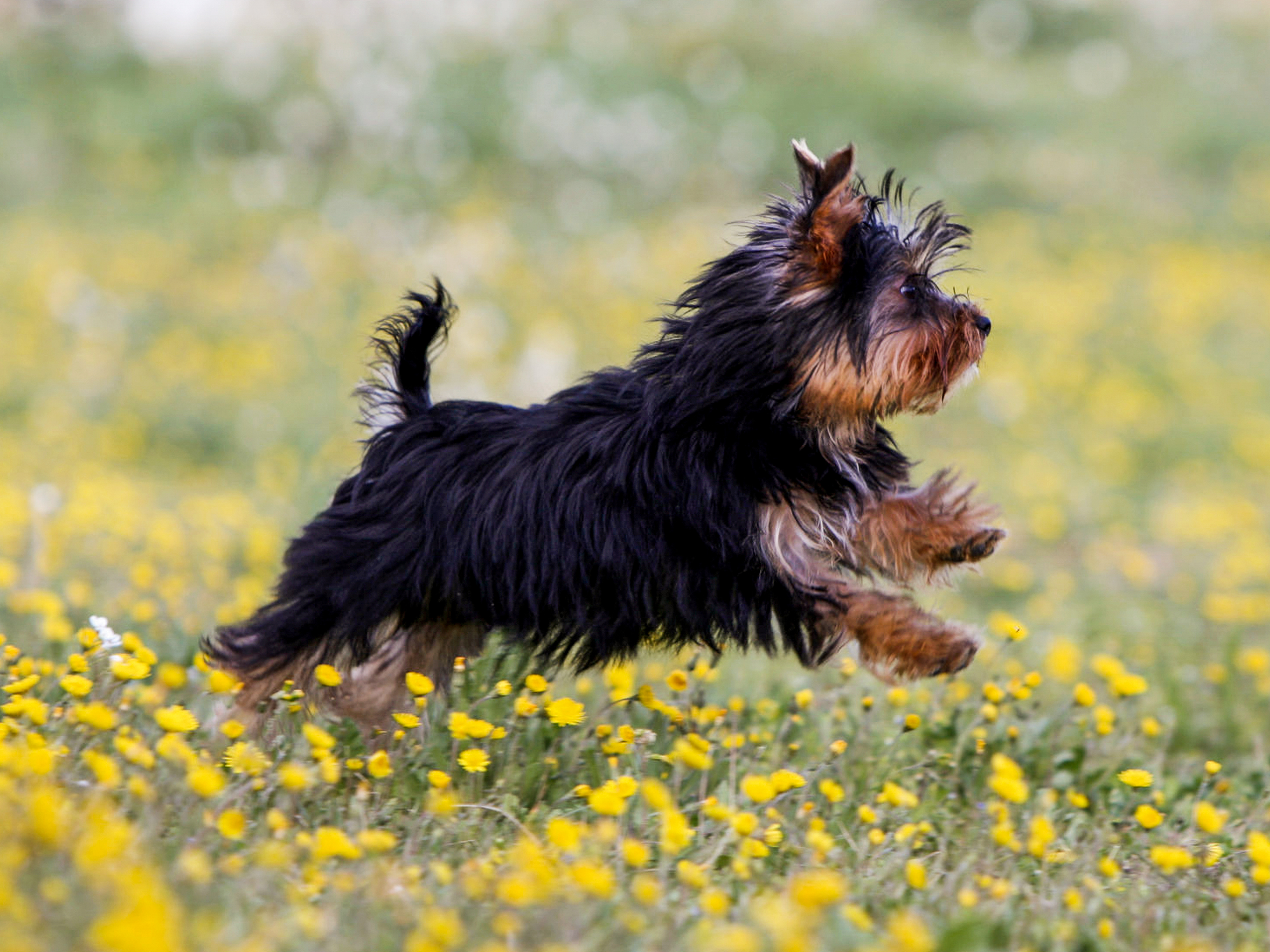
Síðhærðir
Síðhærðir feldir eru vissulega fallegir, en nauðsynlegt er að bursta þá daglega. Það getur tekið allt að klukkustund á dag fyrir fullorðna hunda af Afghan Hound-kyni, svo dæmi sé tekið. Notaðu slikkerbursta og burstaðu í sömu átt og hárin liggja til að losa hnúta og flækjur. Vegna þess hve hárið er sítt getur þetta togað í húðina og því skaltu bursta varlega.
Með því að nota stífari bursta á hundakyn sem er með silkimjúkan feld, eins og t.d. Yorkshire Terrier, fær feldurinn aukinn gljáa. Hægt er að nota vírbursta til að fjarlægja óhreinindi af hundakynjum með þykkri undirhúð, eins og t.d. Rough Collie.
Með því að nota greiðu með víðu bili má losa hár undir bringu og fótleggjum. Hárið má snyrta í jafna lengd með skærum, sem einnig er hægt að nota til að fjarlægja hár sem líklegt er að myndi hnúta eða dragi í sig óhreinindi.

Grófur feldur
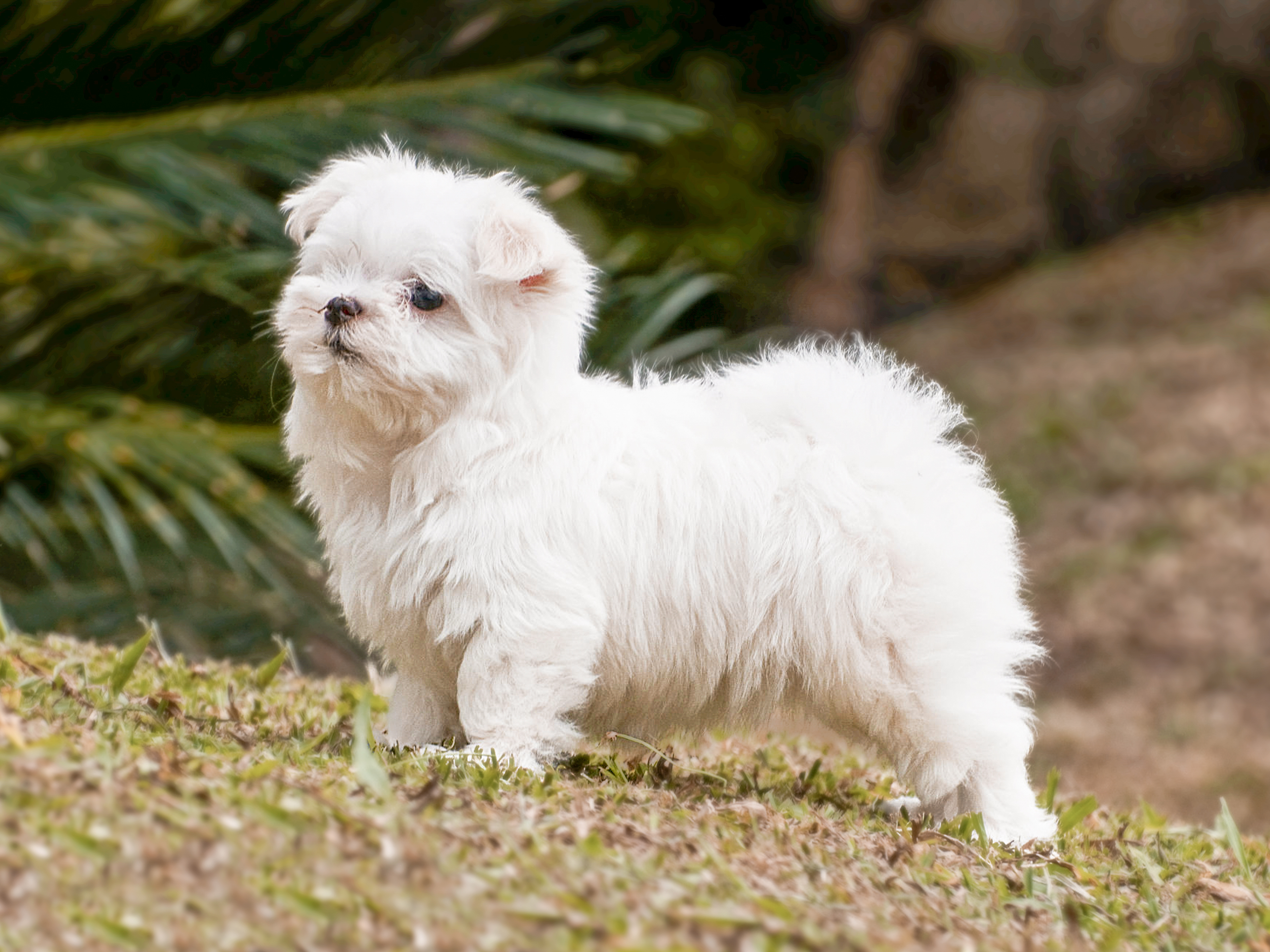
Hrokkinn feldur
Poodle, Bichon Frise og aðrir hrokkinhærðir hundar þurfa annars konar feldhirðu en aðrar hundategundir. Þeir fara minna úr hárum en aðrir hundar og eru því oft taldir minni ofnæmisvaldar. Á hinn bóginn hefur feldur þeirra tilhneigingu til að flækjast meira en feldur á öðrum tegundum og því þarf að bursta hann daglega.
Burstaðu varlega úr feldinum með slikkerbursta og greiddu úr öllum flækjum, alls staðar á líkamanum. Hugaðu sérstaklega að fótleggjum, þófum og svæðinu undir kviðnum þar sem gróður og annað getur safnast fyrir.

Snöggur feldur

Stutt til meðalsítt hár
Kyn með stutt til meðallangt hár eru meðal annars Golden Retriever, German Shepherd og Boarder Collie. Bursta ætti slík hundakyn annan hvern dag vegna þéttleika feldsins, sem getur verið samsettur af bæði yfir- og undirfeldi.
Notaðu sleipari bursta til að bursta í gagnstæða átt við feldinn til að losa eins mikið af dauðu hári og húð og mögulegt er og hreinsa undirfeldinn. Síðan má nota stífari bursta í sömu átt og feldurinn liggur til að fjarlægja þessar leifar.
Nota má grófa greiðu á skottið og loppurnar til að fjarlægja varlega leifar og flækjur.

Síðhærðir
Síðhærðir feldir eru vissulega fallegir, en nauðsynlegt er að bursta þá daglega. Það getur tekið allt að klukkustund á dag fyrir fullorðna hunda af Afghan Hound-kyni, svo dæmi sé tekið. Notaðu slikkerbursta og burstaðu í sömu átt og hárin liggja til að losa hnúta og flækjur. Vegna þess hve hárið er sítt getur þetta togað í húðina og því skaltu bursta varlega.
Með því að nota stífari bursta á hundakyn sem er með silkimjúkan feld, eins og t.d. Yorkshire Terrier, fær feldurinn aukinn gljáa. Hægt er að nota vírbursta til að fjarlægja óhreinindi af hundakynjum með þykkri undirhúð, eins og t.d. Rough Collie.
Með því að nota greiðu með víðu bili má losa hár undir bringu og fótleggjum. Hárið má snyrta í jafna lengd með skærum, sem einnig er hægt að nota til að fjarlægja hár sem líklegt er að myndi hnúta eða dragi í sig óhreinindi.

Grófur feldur

Hrokkinn feldur
Poodle, Bichon Frise og aðrir hrokkinhærðir hundar þurfa annars konar feldhirðu en aðrar hundategundir. Þeir fara minna úr hárum en aðrir hundar og eru því oft taldir minni ofnæmisvaldar. Á hinn bóginn hefur feldur þeirra tilhneigingu til að flækjast meira en feldur á öðrum tegundum og því þarf að bursta hann daglega.
Burstaðu varlega úr feldinum með slikkerbursta og greiddu úr öllum flækjum, alls staðar á líkamanum. Hugaðu sérstaklega að fótleggjum, þófum og svæðinu undir kviðnum þar sem gróður og annað getur safnast fyrir.
Að baða hvolpinn
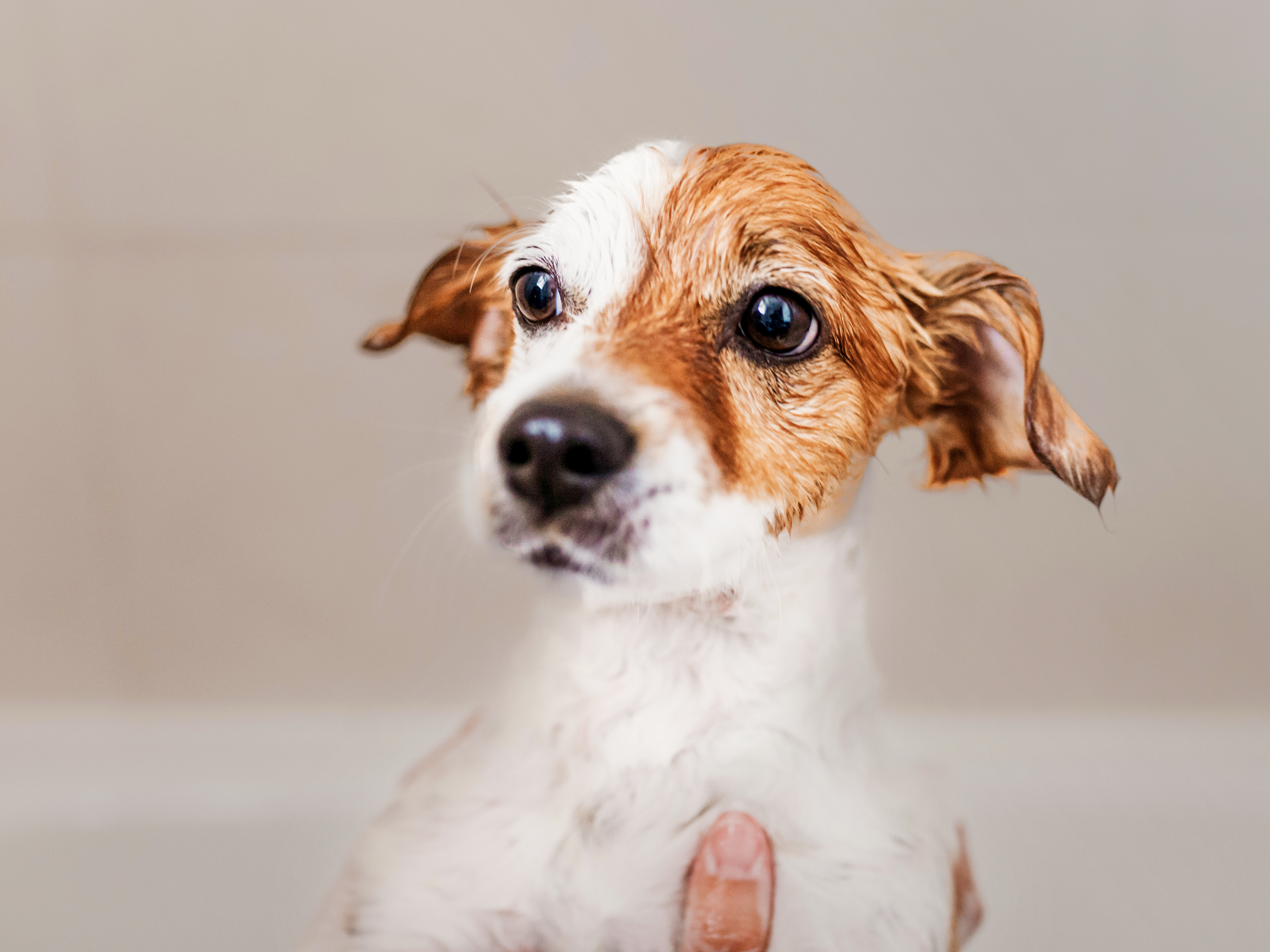
Að baða hvolp
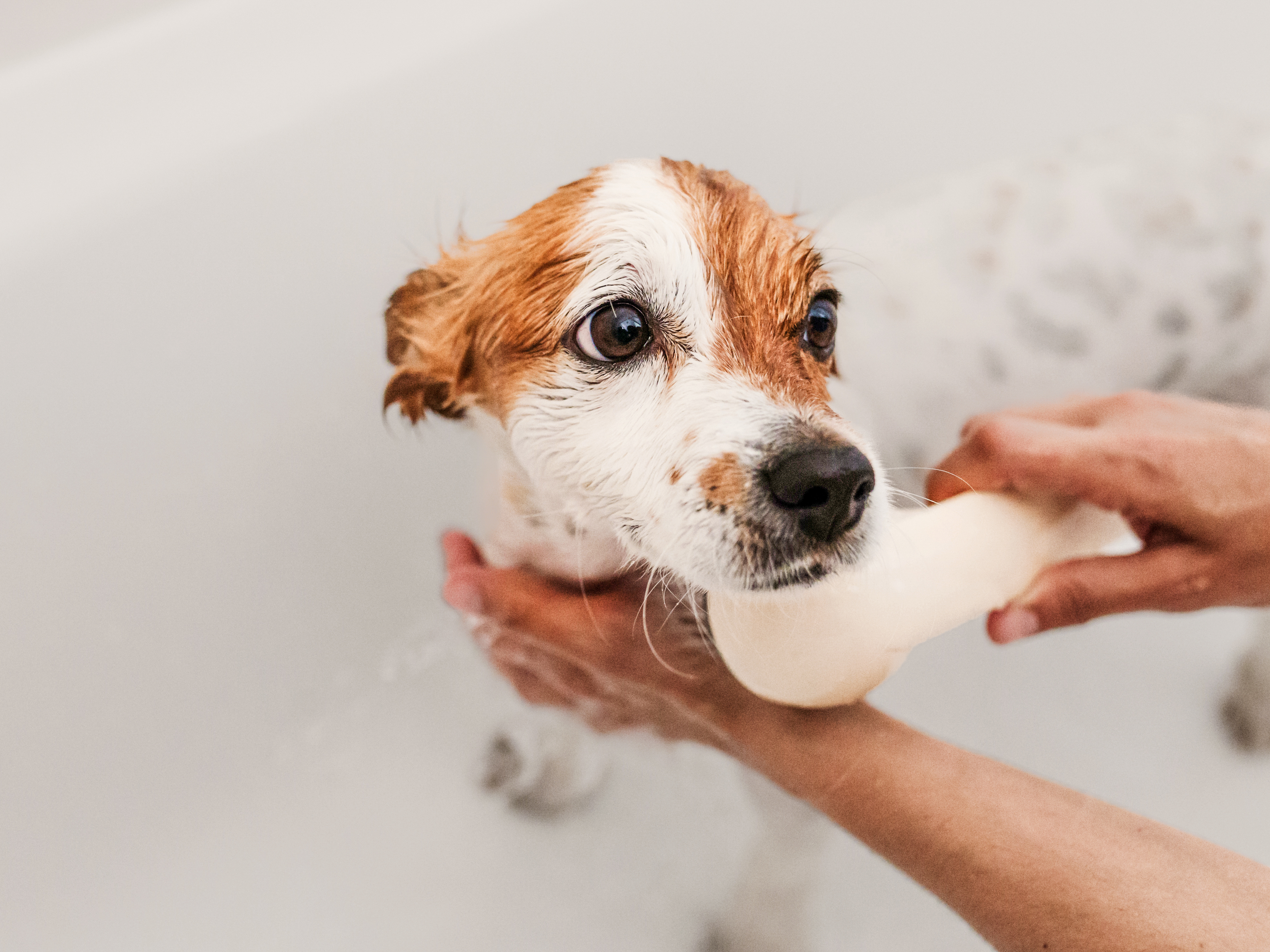
Að baða hvolp
- Láttu hvolpinn venjast baðinu án vatns, leyfðu honum að þefa af því og hrósaðu honum á meðan
- Láttu volgt vatn renna í baðið til að tryggja að hvolpurinn brenni sig ekki og settu hann smám saman út í aftur
- Bleyttu feldinn allan og settu í hann sérstakt hvolpasjampó en passaðu þig á að ekkert fari í augun
- Haltu áfram að hrósa hvolpinum og hughreysta hann allan tímann
- Skolaðu vandlega með miklu vatni en geymdu höfuðið þangað til síðast til að koma í veg fyrir að hann hristi sig
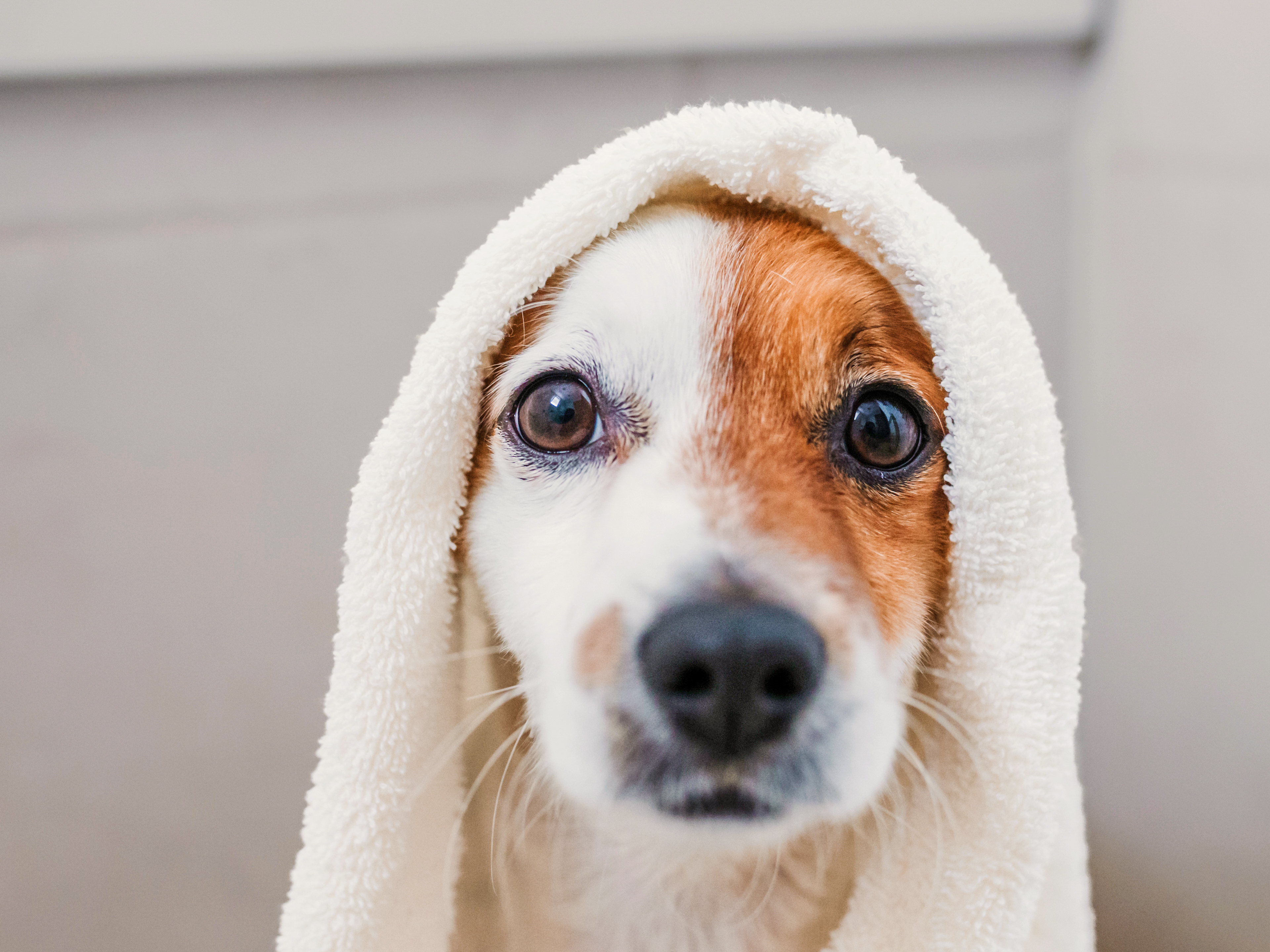
Hvernig þurrka skal hvolpafeld
Eftir baðið skaltu nudda hvolpinn þinn hraustlega með handklæði og hafa hann í hlýju herbergi þar til hann hefur þornað almennilega. Á sumrin er hægt að þurrka hvolpinn í garðinum eða fara með hann í göngutúr, svo lengi sem hann tekur ekki upp á því að velta sér upp úr moldinni.
Hárþurrka gæti verið hentug fyrir hunda með krullaðan feld, en þá þarf að passa sig á að brenna ekki hundinn og bursta ætti hárið samtímis til að forðast flækjur.
1.Cleaning your puppy's ears
2.Caring for your puppy's teeth
3.How to clip your puppy's nails
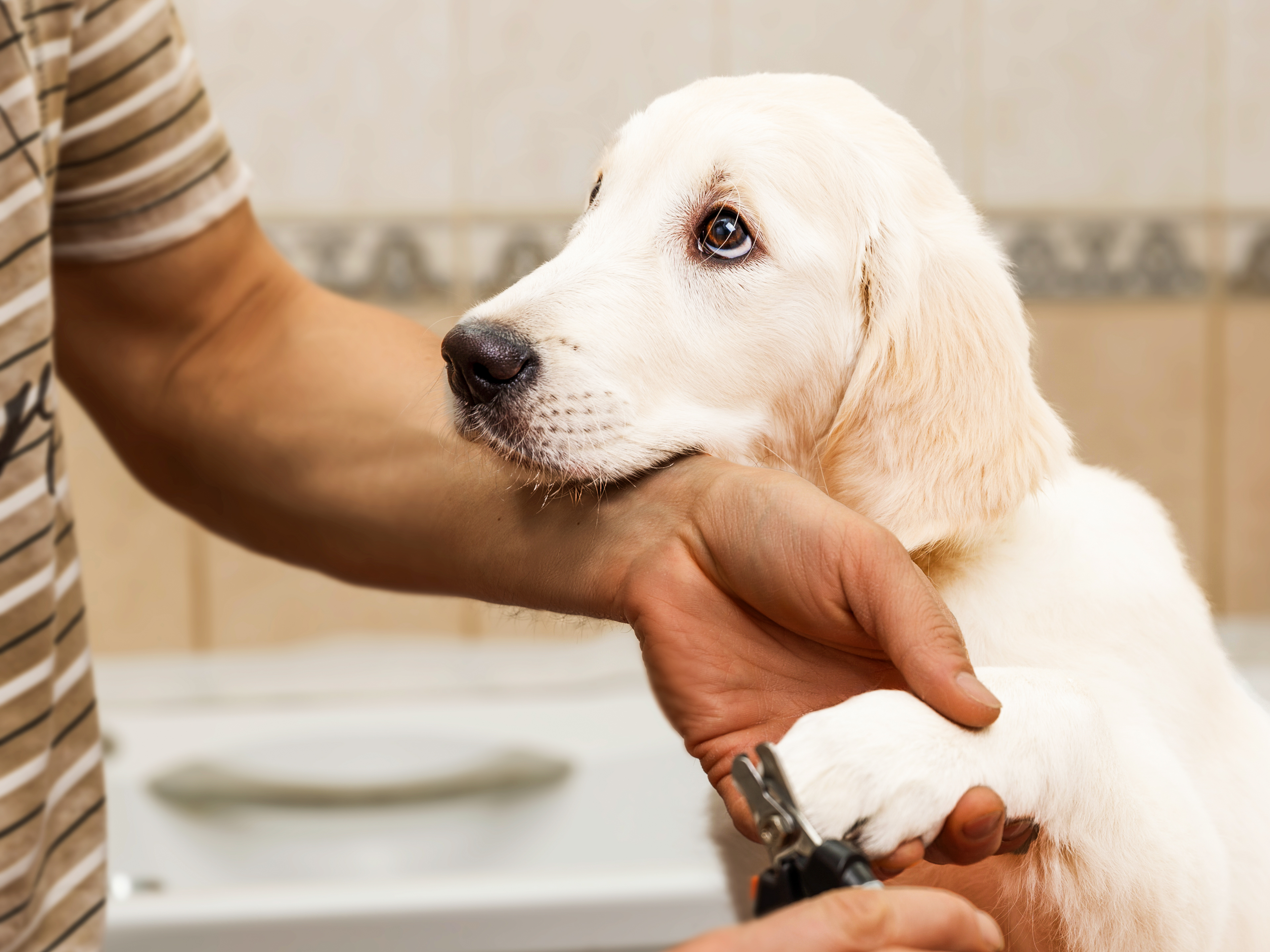
Hvernig á að klippa klær á hvolpum?
Klærnar ættu að eyðast að sjálfu sér þegar hvolpurinn gengur á hörðu undirlagi. Ef þær vaxa of mikið gætir þú þurft að klippa þær. Það þarf að klippa klærnar varlega til að klippa ekki æðarnar sem eru í klónum. Klipptu klærnar með sérstökum klóklippum. Byrjaðu neðst og klipptu smám saman meira af klónni. Best er að klippa klærnar á ská þannig að þær myndi 45 gráður við gólfið. Það þarf að klippa klærnar vandlega þannig að ekki myndist sprungur.
Ef þú ert ekki viss um hvernig á að klippa klærnar á hvolpinum þínum skaltu biðja dýralækni að sýna þér hvernig best er að bera sig að.
